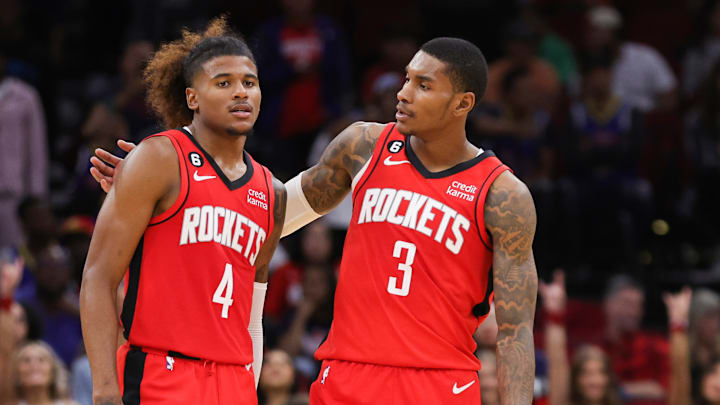How the Rockets’ offensive style looks compared to last season
Using the four offensive style markers used by Nylon Calculus, let’s see how the Rockets’ offense looks compared to last season.
Ball movement is simply average seconds per touch. Player movement is more involved. It’s the average distance covered in feet in an offensive possession per 24 seconds. Shot selection is via the Moreyball percentage, essentially the percentage of shots a team takes around the rim, 3-point attempts, and free throws. Pace is via inpredictable and is the average time to shoot per offensive possession.
How the Rockets' offense has changed from 2021-22 to 2022-23 in terms of ball movement, player movement, shot selection quality, and pace pic.twitter.com/7T2KX5ckpy
— N.B. Lindberg (@nblindberg) October 28, 2022
So what has happened to the Rockets’ offense? Thus far, there has been less ball movement and a tremendous drop in shot quality. The drop in shot quality is even more pronounced than the metric suggests.
Moreyball percentage treats all 3-point attempts equally, even though corner threes are a more valuable shot. The Rockets have seen the percentage of their threes coming from the corner go from 20.7% in 2021-22 to 8.2% this season. This season’s mark is far and away the lowest in the league, with the Pelicans second to last, taking 14.7% of their threes from the corner.
The Rockets have increased their pace and also seen an uptick in player movement. To put it all together, the Rockets are playing faster, passing less, moving a bit more, and it’s leading to way worse shots. The changes have led to a drop in offensive efficiency, going from 108.4 to 107.3.
The Rockets’ saving grace this season has been a massive uptick in offensive rebounding and cutting their turnover rate. Their improved ability to win the possession battle has helped keep the offense afloat, as their effective field goal percentage has gone from 53.4% to 48.6%.
With an uptick in shot quality, the Rockets' offense could very easily show season-to-season improvement.
